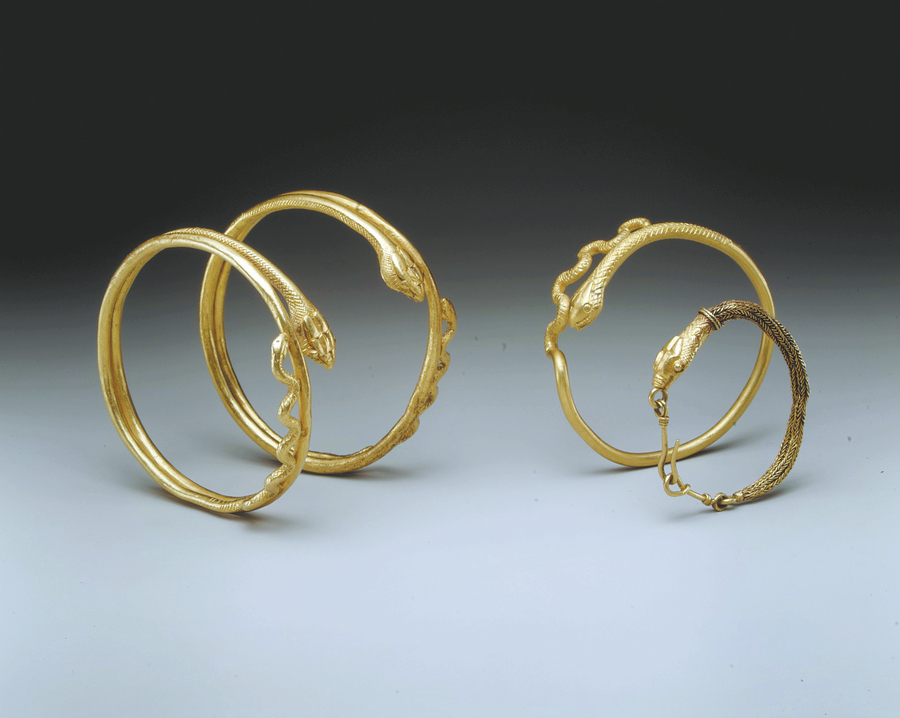Decoding serpentine paradox
With the Year of the Snake on the horizon, Zhao Xu takes a look at the enigmatic creature in myriad cultures.


In 332 BC, Alexander the Great conquered Egypt during his military campaign across the Persian Empire. After his death in 323 BC, his empire was divided, and Egypt eventually came under the rule of his general Ptolemy I, marking the start of the Ptolemaic Dynasty. The Ptolemaic rulers accepted and reinforced the Egyptian motifs including the snakes, bringing to Egypt snake-themed bracelets.
Cleopatra VII, the last active ruler of the Ptolemaic Kingdom of Egypt, was ultimately defeated by Octavian (63 BC-AD 14), who later became known as Augustus, the first Roman emperor. While Cleopatra famously killed herself by snakebite in 30 BC, Augustus, bringing Egypt under direct Roman control, aggressively embraced the symbolism of the serpent to bolster his sense of legitimacy. Coins minted during his reign often depicted a serpent coiled around an altar, signifying the emperor's connection to gods and divine protection.
It's believed that the snake in this context represented Asclepius, the Greco-Roman god of medicine and healing. Asclepius was often depicted holding a staff with a single serpent coiled around it, known as the Rod of Asclepius. In fact, sacred snakes were kept in temples dedicated to the god and sometimes allowed to roam freely around patients, as they were believed to be able to transmit healing energy.
Such was the powerful symbolism of the Rod of Asclepius that it was later adopted as the logo of the World Health Organization.
























